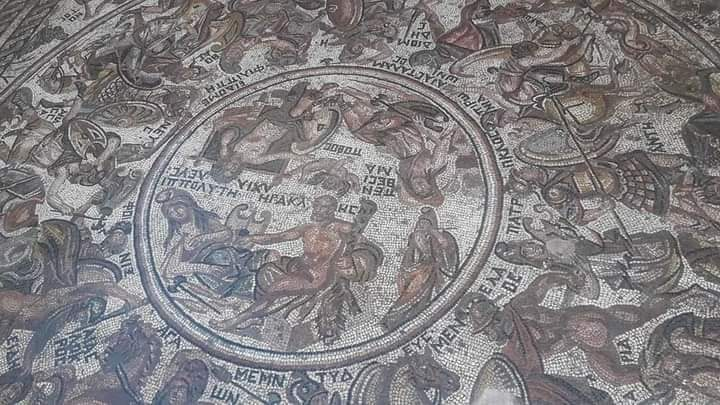The mosaic panel discovered in Rastan brings with it an unexpected misfortune for the residents

The ancient Roman mosaic painting recently discovered in the city of Rastan, north of Homs, brought an unexpected misfortune to the residents there, after the Assad regime's intention to expropriate the surrounding houses in the painting.
Media sources said that the owners of the houses surrounding the mosaic painting are waiting for the fate of their homes to be clarified during the coming period, especially with the General Directorate of Antiquities believing that the painting will extend under several houses in the area.
And the loyalist “Athar Press” website quoted the director of the Antiquities Department in Homs, Husam Hamish, as saying that the directorate had bought the houses located above the painting, which are three houses in principle, with the support of the Nabu Museum.
He added that parts of the painting extend under other houses, and that work will initially stop to complete the legal procedures and estimate the financial values necessary to complete the direct purchase process, so that the system can remove it and show the rest of the painting.
He pointed out that he believed that there were other paintings in the area, so the system identified 9 archaeological sites that it wants to excavate, and is working to determine the financial values of the buildings to be removed.
Hamish claimed that the houses will be purchased gradually, as long as funds are allocated by the financiers and the General Directorate of Antiquities and Museums.
He expressed his hope to increase the number of funders, pointing at the same time to resorting to the idea of expropriation proposed by the General Directorate of Antiquities and Museums.
The General Directorate of Antiquities and Museums of the Assad government had announced the discovery of a rare large mosaic panel in the city of Rastan, explaining that it is a rare archaeological masterpiece dating back to the Roman era, and unparalleled in the world.
Source:websites

